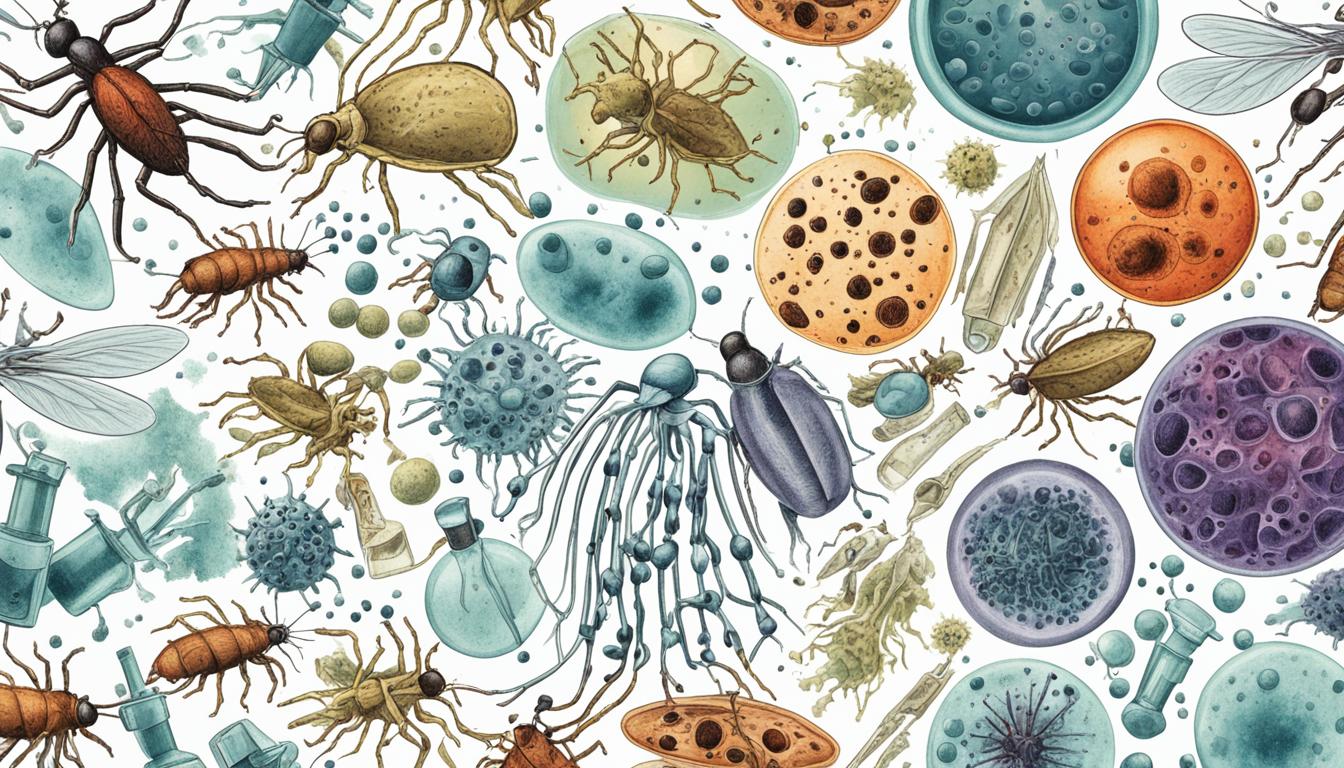Plague is a dangerous infectious disease caused by the bacterium Yersinia pestis. It spreads through the bites of infected fleas and ticks which are usually on rats. This disease is highly contagious, with symptoms that can prove fatal in 30-60% of cases. There are several forms of plague, such as the bubonic form and the pulmonary form. Symptoms include things like flu symptoms, swollen lymph nodes, and the severe health conditions listed above.
Key Takeaways:
- Plague is an infectious disease caused by the bacterium Yersinia pestis.
- It is transmitted through the bites of infected fleas and ticks.
- Symptoms can range from flu-like symptoms to swollen lymph nodes, sepsis, and acute pulmonary edema.
- Early diagnosis and treatment are crucial in reducing the risk of death and complications.
- Stem cell therapy has shown potential in the treatment of plague.
Transmission and Prevention of Plague
Plague is a highly infectious disease caused by the Yersinia pestis bacteria. It spreads when people are bitten by fleas and ticks that live on rats. To stop the spread, it’s crucial to control rat numbers and break their connection to humans.
Direct contact with things like clothes and blankets from infected areas can also pass the disease. Washing hands often and not touching these items helps prevent it. In crowded places, wearing a mask lowers the risk of breathing in the disease.
Eating or drinking something harmful is another way to get the plague. Cooking food well and always drinking clean water can keep you safe. Making sure food is handled and stored properly helps avoid sickness.
Preventing Plague Transmission
To keep the plague from spreading, several steps can be followed.
- Cleaning up the place to stop rats from coming near is top priority. This means managing trash well and always cleaning living spaces.
- Using chemicals to kill rats and fleas, as well as hiring experts for help, is a good idea.
- Vaccines for the disease do exist but how well they work is not fully known. Doctors can help decide if getting vaccinated is right for someone based on their risks.
- In case of plague signs, getting medical help fast is very important. Quick treatment helps a lot and keeps others from getting sick.
Stopping the plague from spreading takes a team effort. Including public health improvements, better sanitation, and more sharing about the disease. Remember, following these steps can keep you and those around you safe from this deadly illness.
Historical Outbreaks and Research on Plague
Plague is caused by the Yersinia pestis bacterium. It has a long, horrible history. The most known outbreak was the Black Death in the 14th century. This disease killed millions across Europe and Asia. It greatly affected life and society back then.
The discovery of Yersinia pestis came in 1894. Ever since, scientists have learned a lot about it. They’ve studied its genes and how it spreads. This knowledge has helped create tests to diagnose it. Plus, it’s led to looking at ways to treat the disease.
Today, researchers are working to find better ways to detect and prevent the plague. They want to know more about how the bacterium moves. Their work is all about trying to stop future outbreaks. They’re focused on protecting people’s health now and later.
Looking back at past outbreaks shows us how bad the plague can be. Continued research is key. It helps us fight against the disease with new and better ways. By working together and thinking outside the box, we aim to limit the plague’s harm and keep our communities safe.

